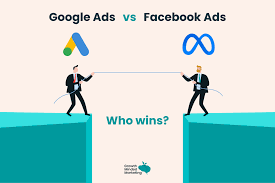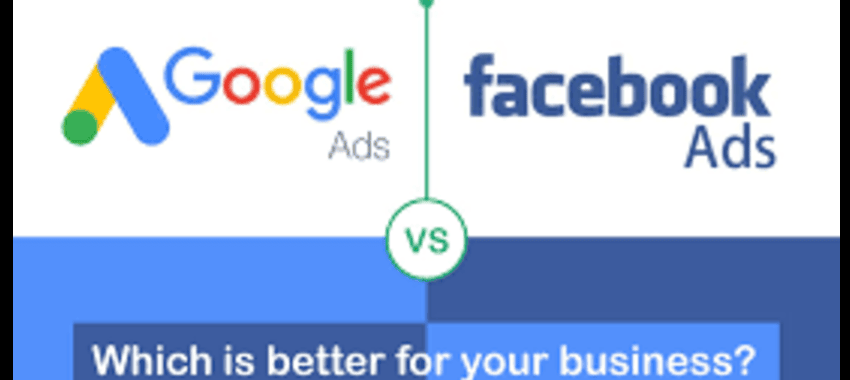In the ever-evolving landscape of digital marketing, businesses must make strategic choices to maximize their advertising budget. Among the most popular paid advertising platforms, Google Ads and Facebook Ads stand out as dominant forces, each with unique strengths and targeting capabilities. But which one works best? The answer largely depends on your business goals, target audience, and campaign objectives. In this article, we’ll break down the key differences, advantages, and best use cases for both platforms to help you make an informed decision.
Understanding Google Ads
Google Ads, formerly known as Google AdWords, is a pay-per-click (PPC) advertising platform that allows businesses to display ads on Google’s search results pages, YouTube, and partner websites in the Google Display Network. The platform primarily works based on keywords, meaning that advertisers bid on specific search terms relevant to their business. When users search for those keywords, Google displays relevant ads, making it an excellent tool for intent-driven marketing.
Advantages of Google Ads:
High Intent Traffic: Since users actively search for specific products or services, they are more likely to convert.
Wider Reach: With billions of searches conducted daily, Google Ads provides access to a vast audience.
Diverse Ad Formats: Google offers search ads, display ads, shopping ads, video ads, and app promotion ads.
Advanced Targeting Options: You can target users based on demographics, location, device, time, and more.
Performance Tracking: Google Ads provides detailed insights into campaign performance, allowing for optimization and budget adjustments.
Understanding Facebook Ads
Facebook Ads, which includes advertising on Instagram and Messenger, is a social media advertising platform that leverages user data to display ads in users’ feeds, stories, and other placements. Unlike Google Ads, which targets users based on search intent, Facebook Ads uses detailed demographic and behavioral data to present ads to relevant audiences, making it an excellent tool for brand awareness and engagement campaigns.
Advantages of Facebook Ads:
Precise Audience Targeting: Facebook collects extensive user data, allowing advertisers to target audiences based on interests, behaviors, demographics, and custom audiences.
Engagement and Awareness: Facebook Ads are designed to generate likes, shares, comments, and interactions, fostering community engagement.
Variety of Ad Formats: Businesses can use carousel ads, video ads, lead generation ads, and more to enhance their campaigns.
Retargeting Capabilities: Facebook’s pixel allows businesses to retarget website visitors and past customers effectively.
Cost-Effective for Brand Building: Compared to Google Ads, Facebook Ads often have a lower cost per click (CPC), making it suitable for brand awareness campaigns.
Google Ads vs. Facebook Ads: A Head-to-Head Comparison
Factor
Facebook Ads
User Intent
High (users actively searching)
Low (users passively browsing)
Targeting
Keyword-based
Interest & behavior-based
Ad Formats
Search, display, video, shopping ads
Image, video, carousel, lead ads
Cost
Higher CPC, but high ROI
Lower CPC, but may require nurturing
Best For
Immediate conversions, high-intent purchases
Brand awareness, engagement, and customer retention
Analytics & Optimization
Advanced tracking and reporting
Strong social engagement metrics and tracking
Which One Works Best for Your Business?
The best platform depends on your business model, objectives, and marketing strategy.
When to Use Google Ads:
If you sell high-intent products or services that people actively search for (e.g., “emergency plumbing services” or “buy running shoes online”).
If you want immediate conversions and sales.
If you have a higher budget and can compete on competitive keywords.
If your business is in the B2B space, where search intent is crucial.
When to Use Facebook Ads:
If you want to increase brand awareness and engage with potential customers.
If you sell visually appealing products or lifestyle-based services.
If you’re running a retargeting campaign to bring users back to your website.
If you have a limited budget and want a cost-effective way to reach new audiences.
The Ideal Approach: Using Both Platforms Together
For businesses that want to maximize their online presence, the best strategy is often a combination of both Google Ads and Facebook Ads. By leveraging Google Ads for high-intent searches and Facebook Ads for awareness and engagement, businesses can create a holistic digital marketing strategy that nurtures customers at every stage of the buying journey.
For example, a business can use Facebook Ads to introduce its brand and generate interest, then retarget engaged users with Google Ads when they search for related products or services. This omnichannel approach increases conversions and strengthens brand recognition.
Final Thoughts
Neither Google Ads nor Facebook Ads is universally better—it all depends on your business needs and marketing goals. If your priority is immediate conversions from high-intent searches, Google Ads is the way to go. If you want to build brand awareness and target audiences based on interests and behaviors, Facebook Ads may be a better fit. However, the most effective strategy often involves using both platforms in tandem to optimize reach and maximize results. By understanding their strengths and leveraging them effectively, businesses can make the most out of their digital advertising effort
